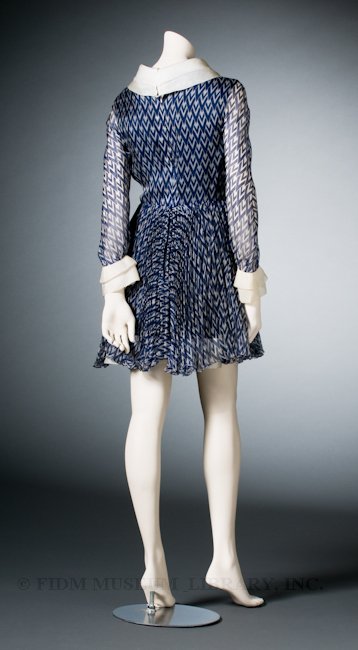You've probably heard that retired couturier Valentino Garavani (b. 1932) will soon launch a virtual museum showcasing highlights from his five decades in fashion. Slated to launch on December 5, the virtual museum will use 3-D technology to create a palazzo with a series of galleries dedicated to garments, images, videos and more. A short promotional video describing The Valentino Garavani Virtual Museum can be seen here.
Many designers keep archives of their designs, sketches, press clippings and other documentation. In some cases, garments or images pulled from these archives will eventually surface in a publication or a museum exhibition. But for the most part, these archives serve only as an in-house resource or a reservoir of primary source material for the outside researcher. Some designers, including Claire McCardell, Christian Dior and Elsa Schiaparelli, made a conscious attempt to document their contributions to fashion by authoring biographies. Until Valentino, however, no individual couturier has comprehensively approached the preservation of his or her legacy. It will be fascinating to see how Valentino presents his extensive career and which garments he chooses to highlight when his virtual museum is open for viewing!

Culotte dress
Spring/Summer 1969
Valentino Couture
Gift of Laura Jarre
87.384.2
Valentino's career began in the 1950s, during the golden age of the haute couture. After informing his family that he wanted to work in fashion, Valentino attended design school in Milan and at the Ecole de la Chambre Syndicale in Paris. In 1952, he began working for Jean Dessès, moving to Guy Laroche in 1957. After nearly a decade of working in the Paris haute couture, Valentino returned to Rome to open his own house in 1959. In Rome, Valentino continued to work in the tradition of the haute couture, designing luxurious, hand-made garments. Because of the relatively low cost of labor in Italy, Valentino was able to turn out haute couture quality garments for ready-to-wear prices. He quickly attracted an international clientele, including style icons like Jacqueline Kennedy, Babe Paley and Elizabeth Taylor.
Valentino's designs didn't alter radically from season to season; he wasn't interested in challenging transformations. Instead, Valentino was focused on creating an aura of glamour and elegance. During the late 1960s, when many designers were trying to incorporate elements of wacky, youthful street fashion, Valentino's designs were "young without being too kicky or far out."1 Even when Valentino experimented with fads, as in this patterned culotte minidress, there is still a feeling of restraint and elegance.
Hidden under the airy skirt, the culottes are finished with a two-tier white cuff exactly like those seen at the sleeves and neckline. Visible only when the wearer moved, or if the skirt caught an unexpected breeze, the culottes added a youthful touch and an additional measure of modesty. An identical dress, complete with visible culottes, is seen during the opening credits of the 2008 film, Valentino: The Last Emperor.
About 1967, Valentino began incorporating a V-logo into his garments. From the late 1960s onward, it was an easily recognizable symbol of a Valentino product. Used as pocket decoration, belt buckle, textile pattern and advertising logo, Valentino's use of this motif foreshadowed the importance of the visible logo in late twentieth century fashion. Though the overlapping V-pattern printed on this blue and white silk organdy textile is quite subtle, it was probably chosen (at least in part) for its symbolic significance.
1 Sheppard, Eugenia. "Women Are After Valentino Again." The Washington Post. 24 Feb. 1967: C1.



